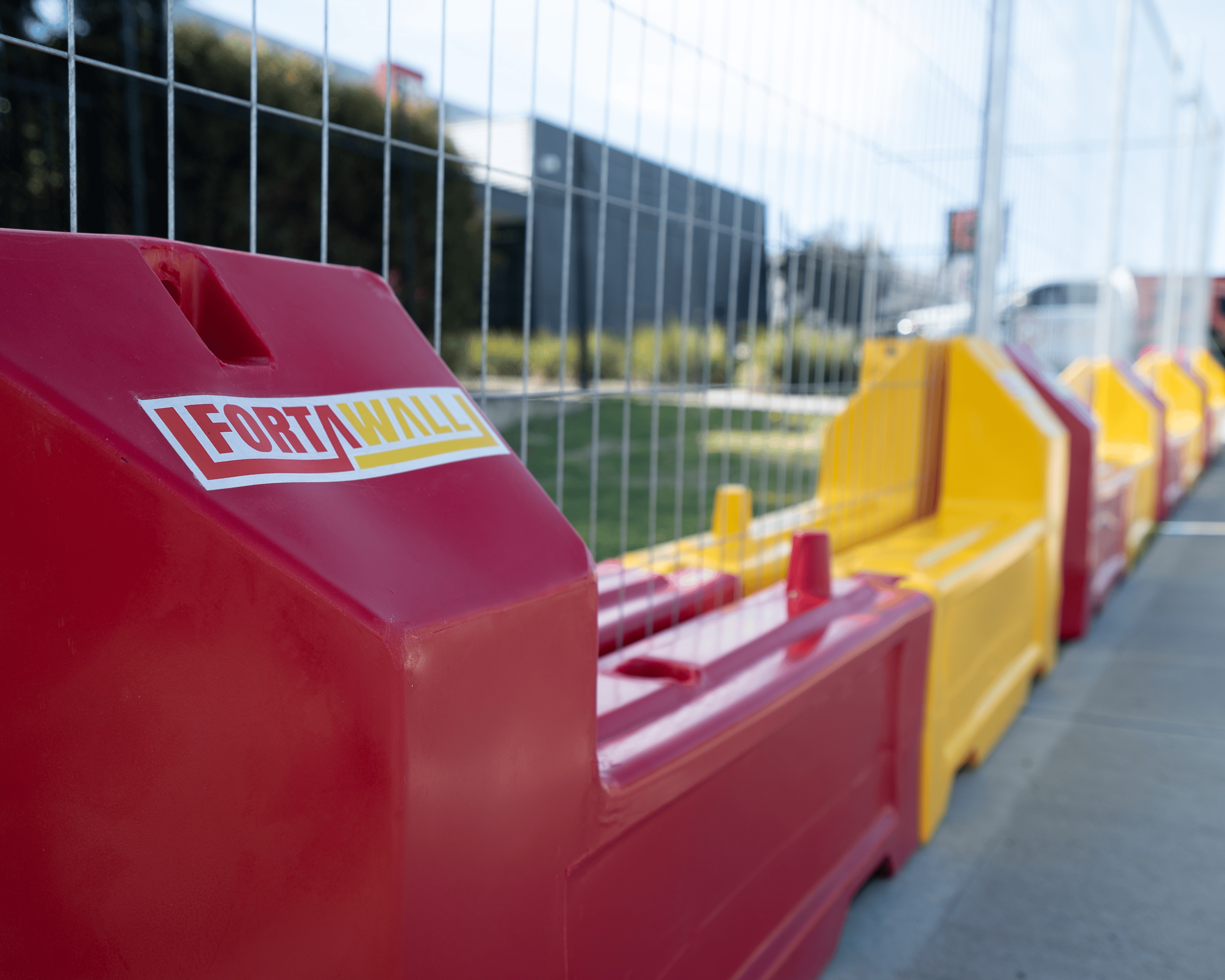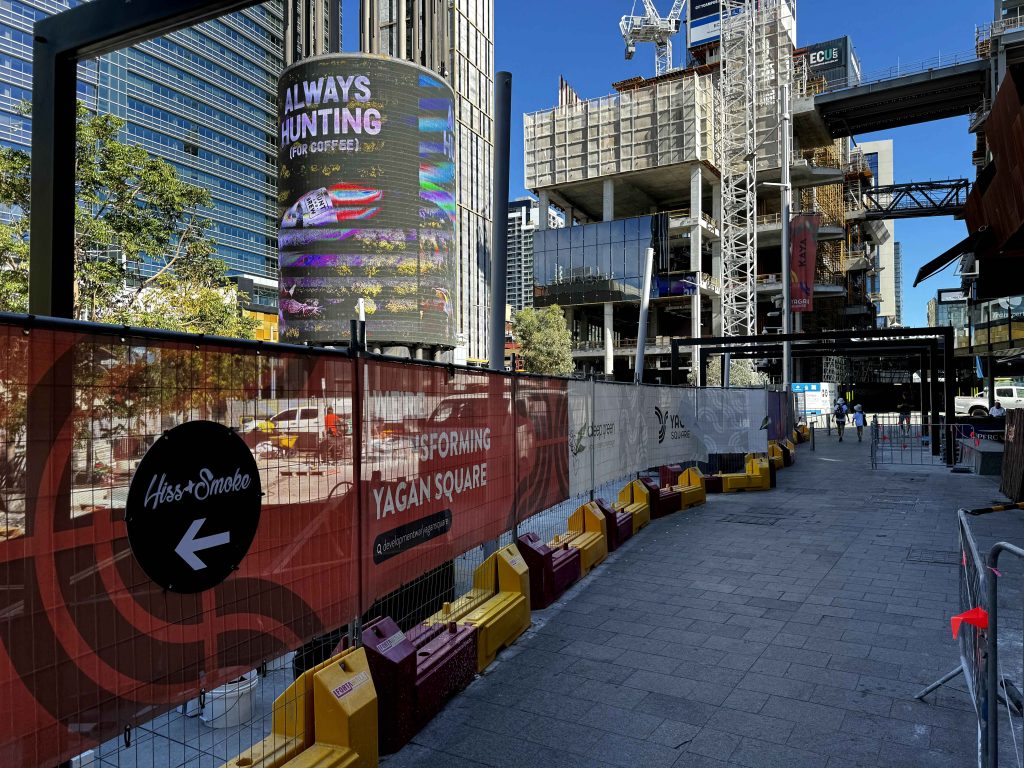Renting temporary fencing might seem straightforward, but making the right choices can save you significant time and money. Whether you’re planning a construction project, an outdoor event, or need short-term security, understanding your temporary fencing options is essential. Selecting the appropriate temporary fencing solution requires careful assessment of your specific needs, local regulations, and site conditions.
Many people underestimate the importance of quality when it comes to short-term fencing. While cost often drives decisions, durability, stability, and security should be the top priorities. High-performance temporary fencing solutions, such as Fortawall’s reinforced modular fencing, provide superior wind resistance and durability, reducing risks of damage or failure during your project.
Before committing to any temporary fencing hire, take time to evaluate your project timeline, environmental factors, and just how much fencing you will need. Consulting with experienced suppliers like Fortawall ensures you get a secure and compliant fencing system tailored to your site’s needs.
Core Considerations
- Assess the purpose of the fence – Whether for construction security, crowd control, or hazard management, different sites require different fencing solutions.
- Ensure compliance with local regulations – Check permit requirements, height standards, and safety guidelines to avoid fines or project delays.
- Evaluate durability and weather resistance – Choose fencing that can withstand wind, UV exposure, and environmental conditions for stability and safety.
Assessing Your Fencing Needs
Before hiring temporary fencing, it’s important to evaluate what specific requirements your project demands. Understanding your purpose and local regulations can prevent costly delays or compliance issues.
Determining the Purpose of the Fence
Consider why you need temporary fencing. Different purposes require different fencing solutions.
For construction sites, high-wind-resistant barriers, such as Fortawall’s reinforced modular fencing, offer superior protection against trespassing and theft. These heavy-duty barriers are engineered to withstand wind speeds up to 165 km/h, making them more resilient than standard temporary fencing.
For events, modular crowd control barriers may be a better fit. These are lightweight, easily movable, and effective for guiding people along designated paths while maintaining safety.
The duration of your project is another key factor. A weekend event may require lightweight fencing, whereas a long-term construction project benefits from heavy-duty fencing designed for stability in varying conditions.
Understanding Local Regulations
Local councils across Australia have specific requirements for temporary fencing, which vary by location. Before installation, check whether your project requires permits or must meet specific height and security standards.
Many regions mandate minimum fencing heights for construction sites, typically 1.8 to 2.1 metres. Some councils also have rules about fence appearance, particularly in high-visibility areas. Fortawall’s fencing is engineered to comply with Australian Standards AS4687.2:2022 for Temporary Fencing and Hoardings, ensuring your project meets industry regulations.
Choosing the Right Materials and Design
Selecting the right materials and design impacts security, durability, and effectiveness for your short-term fencing solution. Making an informed decision about choices ensures cost-effectiveness and reduced maintenance.
Selecting Durable Materials
Temporary fencing panels come in various materials, each with different advantages. Steel panels provide excellent strength and enhanced security features, making them ideal for construction sites. Fortawall’s high-strength fencing system is engineered with reinforced materials that outperform traditional steel mesh fencing, providing superior resistance to impact and environmental wear.
If your site is in coastal regions, exposure to salt and moisture can accelerate corrosion. Fortawall’s hot-dip galvanised materials ensure resistance to rust and long-term durability, even in harsh environments.
Considering Weather Resistance and Wind Load
Western Australia’s diverse climate requires fencing that can withstand strong winds, extreme temperatures, and UV exposure.
In high-wind areas, choosing a fencing system with a high wind-load rating is essential. Fortawall’s reinforced fencing is tested for wind resistance up to 165 km/h, reducing the risk of panels collapsing or becoming hazardous in strong gusts.
For projects lasting several weeks or months, UV-resistant materials prevent degradation from Australia’s harsh sun, ensuring the fence remains structurally sound over time.
Proper installation also plays a role in stability. Secure anchoring systems, such as weighted bases and bracing solutions, help prevent fence movement or toppling.
Installation and Maintenance Considerations
Temporary fencing requires thoughtful planning to ensure secure installation and ongoing safety throughout the rental duration.
Comparing DIY and Professional Installation
DIY installation might seem cost-effective, but professional installation ensures safety, compliance, and structural integrity.
Many temporary fence rental companies provide simple slot-together panels, making DIY setups straightforward. However, for challenging terrain, professional installation is highly recommended. Fortawall’s fencing is designed with an innovative base system that eliminates trip hazards, improving overall site safety.
Professional installers also ensure compliance with safety standards and reinforce fencing against wind and impact damage, reducing the likelihood of costly repairs.
Planning for Ongoing Maintenance
Regular inspections help maintain fencing integrity. After strong winds or heavy rain, check for leaning panels or loose connections to prevent safety hazards.
Fortawall’s fencing requires minimal maintenance due to its durable, UV-stabilised materials, but periodic checks ensure optimal security and stability. Many rental companies offer maintenance support, so confirm what’s included in your agreement.
Budgeting for Short-Term Fencing
Planning a realistic budget ensures you get the right fencing without overspending. Rental costs are typically calculated daily, weekly, or monthly, with discounted rates for longer-term hires.
Larger sites require more panels, increasing rental and delivery fees. Measuring your site accurately ensures you only pay for what you need.
Rental pricing varies based on fencing quality, installation options, and additional features like privacy screens or security gates. Fortawall’s fencing, while an investment in durability and safety, can provide better long-term value by reducing damage risks and repair costs.
Need High-Performance Temporary Fencing? Contact Fortawall Today!
Selecting the right temporary fencing ensures security, compliance, and cost-effectiveness for short-term projects. Whether for construction, infrastructure, or event management, choosing high-quality, wind-resistant fencing prevents costly failures and safety risks.
Fortawall’s reinforced modular fencing is designed for superior durability, wind resistance, and compliance with Australian standards. With expert installation and minimal maintenance requirements, Fortawall provides reliable fencing solutions for demanding environments.
For secure, compliant, and cost-effective temporary fencing, contact us today to discuss your project needs.


